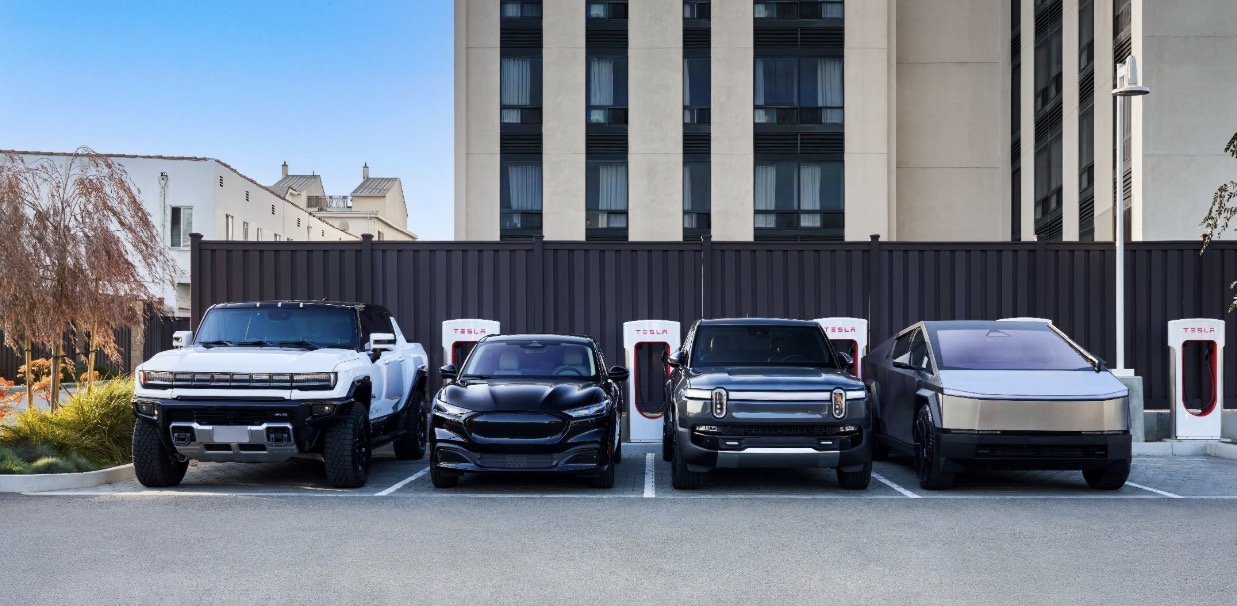
Satisfaction with EV charging has improved, particularly with DC fast chargers and Tesla Superchargers, but challenges remain, according to the J.D. Power “2024 US Electric Vehicle Experience (EVX) Public Charging Study.”
Slow but steady improvement in satisfaction
The number of public charging stations across the US continues to grow, but it’s still not keeping up with the surge in EV sales. The result? More EVs per charger, which has led to a drop in satisfaction. However, this year’s study shows some positive trends.
Satisfaction with DC fast chargers has risen to 664 on a 1,000-point scale, a 10-point increase from 2023. Tesla Superchargers continue to lead the pack, with Tesla owners giving the network a satisfaction score of 743. Non-Tesla owners that recently gained access to the Supercharger network are also relatively satisfied, rating it at 706 – 42 points higher than overall satisfaction with other DC fast chargers.
But while DC fast chargers are gaining favor, Level 2 chargers are losing ground. Level 2s saw their satisfaction score drop to 614, down 3 points from last year. EV owners seem to be growing impatient with the longer wait times associated with Level 2 chargers, which might be a sign that the industry needs to double down on improving fast-charging infrastructure.
The Tesla Supercharger advantage (and limits)
Tesla’s decision to open its Supercharger network to non-Tesla EVs is a game-changer. This move, motivated by the chance to tap into federal infrastructure funds, has allowed more drivers to experience the convenience and reliability of Tesla’s chargers. However, the transition hasn’t been without hiccups. Some Tesla owners have started to notice that Superchargers are getting busier, so their satisfaction with charger availability has dipped slightly.
One big reason Tesla’s Supercharger network continues to outperform other EV charger brands is its seamless user experience. Tesla’s plug-and-pay system takes the hassle out of charging. Non-Tesla owners, on the other hand, need to use adapters and often don’t have access to the same effortless payment experience. This creates a noticeable gap in satisfaction between Tesla and non-Tesla users, especially in terms of ease of payment and charging.
Public charging headaches
Despite these positive trends, the study reveals that public charging is still a headache for many EV owners. Around 19% of respondents reported visiting a charger but being unable to charge their vehicle – a problem that’s only improved by a single percentage point since last year. The most common issue is out-of-service chargers, which accounted for 61% of failed charging attempts.
Another persistent problem is the availability of chargers. In some regions, particularly in the Mid-Atlantic and Pacific, long wait times and a lack of available chargers are leaving EV drivers frustrated. Vandalism and theft also remain concerns, with cable damage being a significant issue in certain parts of the country.
Improving reliability and combating vandalism are crucial steps toward making public charging a more satisfying experience for everyone.
Electrek’s Take
While the 2024 study reflects progress, there’s still a lot to be done. Public charging infrastructure, especially DC fast chargers, needs to expand more rapidly and improve reliability to meet growing demand.
Top comment by Les Inanchy
The Tesla Superchager network was one of the main reasons we went with our first Tesla 7+ years ago,and also the same for our second Tesla 2 years ago. If you want a minimum of charging problems, the only real choice up to now has been Tesla. That will change in the future.
Tesla’s Supercharger network remains the gold standard, but as more non-Tesla drivers plug in, the industry will need to work to ensure that all EV owners have access to fast, reliable, and easy-to-use charging options.
Read more: Mercedes-Benz High-Power Charging goes large at Starbucks
If you live in an area that has frequent natural disaster events, and are interested in making your home more resilient to power outages, consider going solar and adding a battery storage system. To make sure you find a trusted, reliable solar installer near you that offers competitive pricing, check out EnergySage, a free service that makes it easy for you to go solar. They have hundreds of pre-vetted solar installers competing for your business, ensuring you get high quality solutions and save 20-30% compared to going it alone. Plus, it’s free to use and you won’t get sales calls until you select an installer and share your phone number with them.
Your personalized solar quotes are easy to compare online and you’ll get access to unbiased Energy Advisers to help you every step of the way. Get started here. –trusted affiliate link*
FTC: We use income earning auto affiliate links. More.







Comments